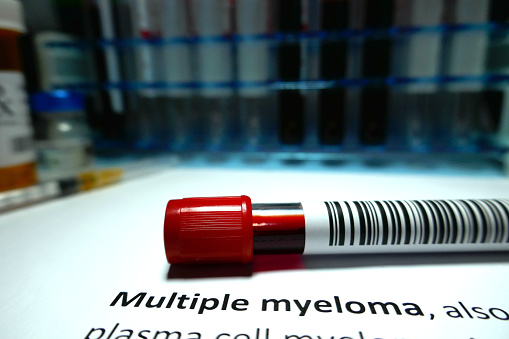
A patient’s current frailty status is a “better predictor of outcomes” than their frailty status at the time of their multiple myeloma (MM) diagnosis, according to a recent study.
Hira Mian, MD, of McMaster University in Canada, and colleagues conducted the research and published its results in Blood Cancer Journal.
It was important to conduct the research because patients who are frail are at a “high risk of poor outcomes” but “current tools for identifying and categorizing frail patients are often static and measured only at the time of diagnosis,” Dr. Mian and colleagues wrote.
“The concept of dynamic frailty (ie, frailty changing over time) is largely unexplored in MM,” according to the researchers.
Dr. Mian and colleagues used the Surveillance, Epidemiology, and End Results (SEER)-Medicare linked databases to identify adults with newly diagnosed MM who received novel treatments between 2007 and 2014. The study included 4,167 patients.
The researchers used a cumulative deficit approach to calculate a frailty index score at diagnosis and at landmark intervals of one, two, and three years after diagnosis. They evaluated the associated between frailty and overall survival (OS) at baseline and each landmark interval. The researchers also evaluated factors that were linked with “worsening frailty status over time.”
The researchers classified more than one-third (39%) of patients as being moderately or severely frail at baseline. However, in patients who had three years of follow-up, the frailty categorization changed after diagnosis in 93% of the cohort. Within those patients, 78% had an improved frailty categorization and 72% had a deteriorated frailty categorization at one or more time points during the follow-up period.
The predictive ability of frailty categorization at diagnosis decreased over time for OS in a landmark analysis and was “inferior” compared with a patient’s current frailty status at each landmark interval, according to the study’s authors.
“Our study is one of the first to demonstrate the dynamic nature of frailty among older adults with MM,” Dr. Mian and colleagues concluded. “Frailty may improve or deteriorate over time. Current frailty status is a better predictor of outcomes than frailty status at time of diagnosis, indicating the need for remeasurement in this high-risk patient population.”
Reference
Mian H, Wildes TM, Vij R, Pianko MJ, Major A, Fiala MA. Dynamic frailty risk assessment among older adults with multiple myeloma: A population-based cohort study. Blood Cancer J. 2023;13(1). doi:10.1038/s41408-023-00843-5






 © 2025 Mashup Media, LLC, a Formedics Property. All Rights Reserved.
© 2025 Mashup Media, LLC, a Formedics Property. All Rights Reserved.